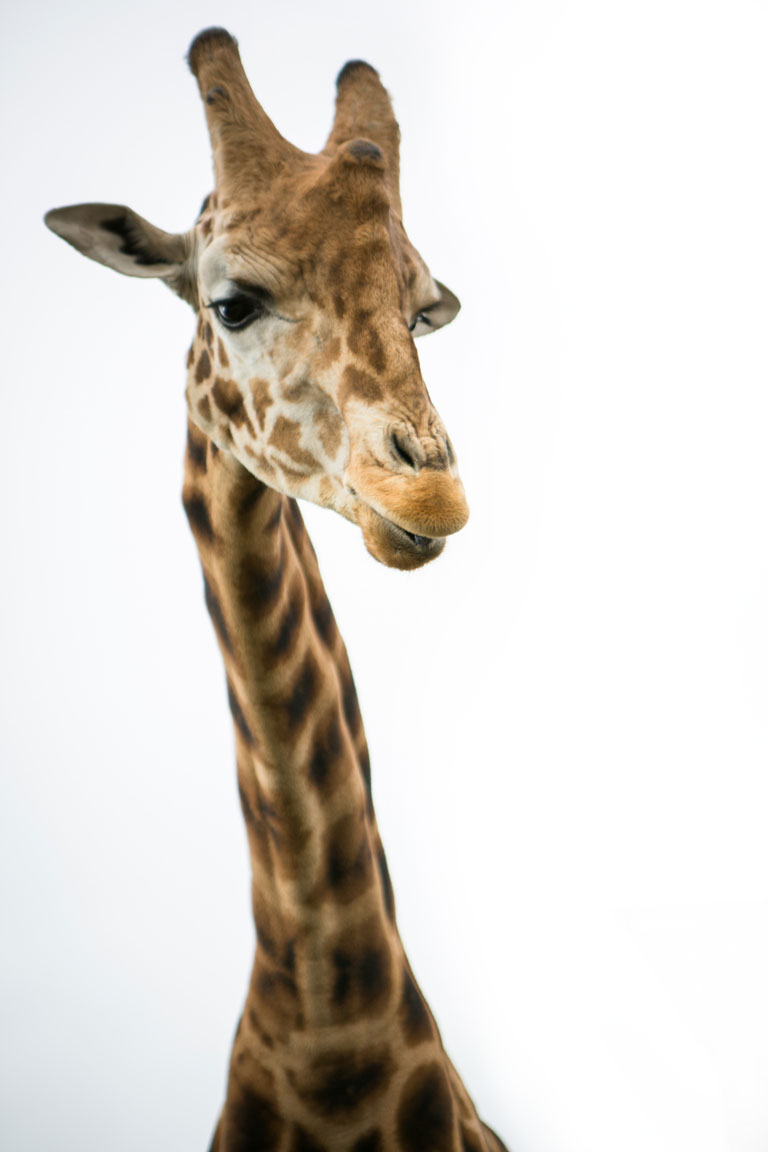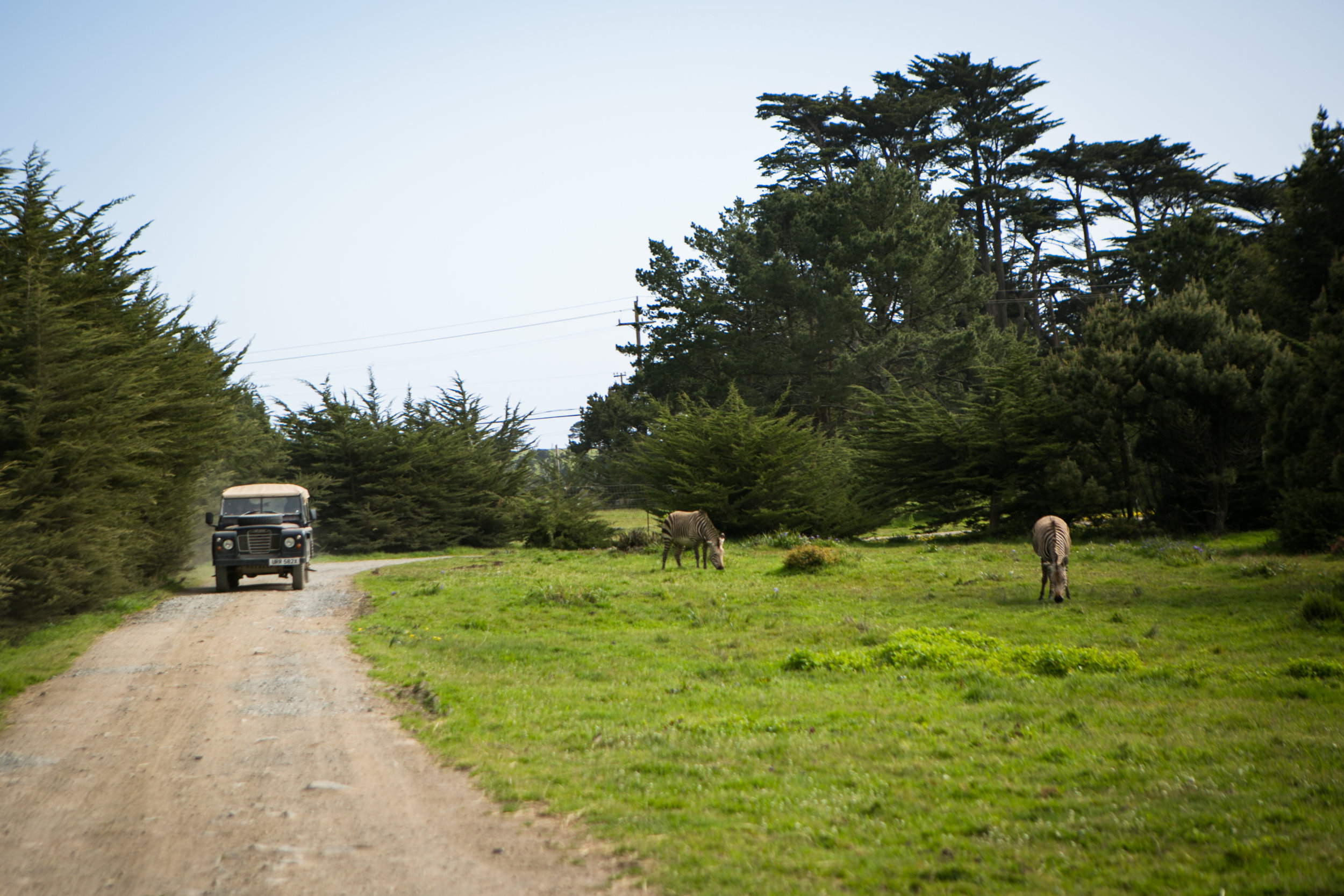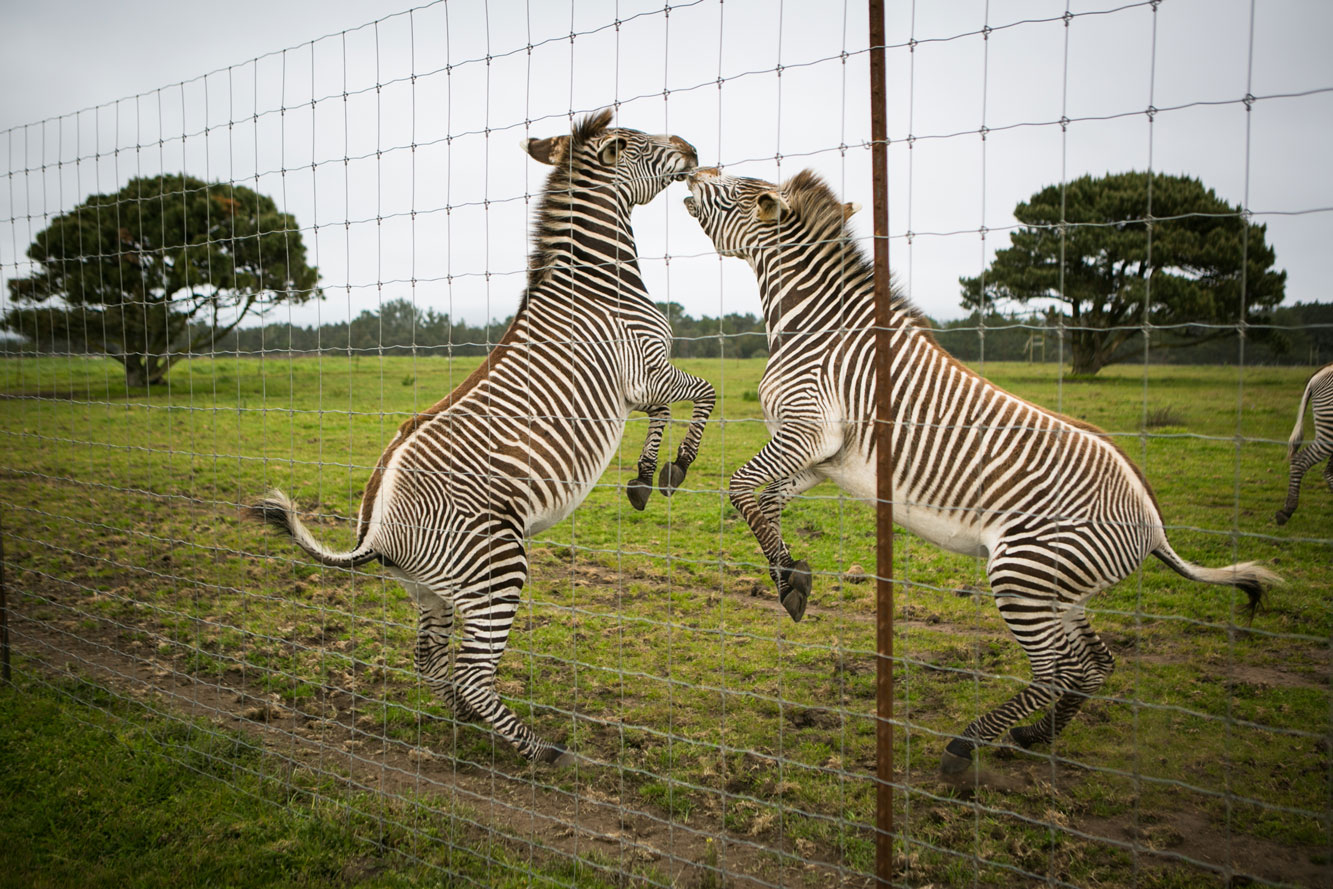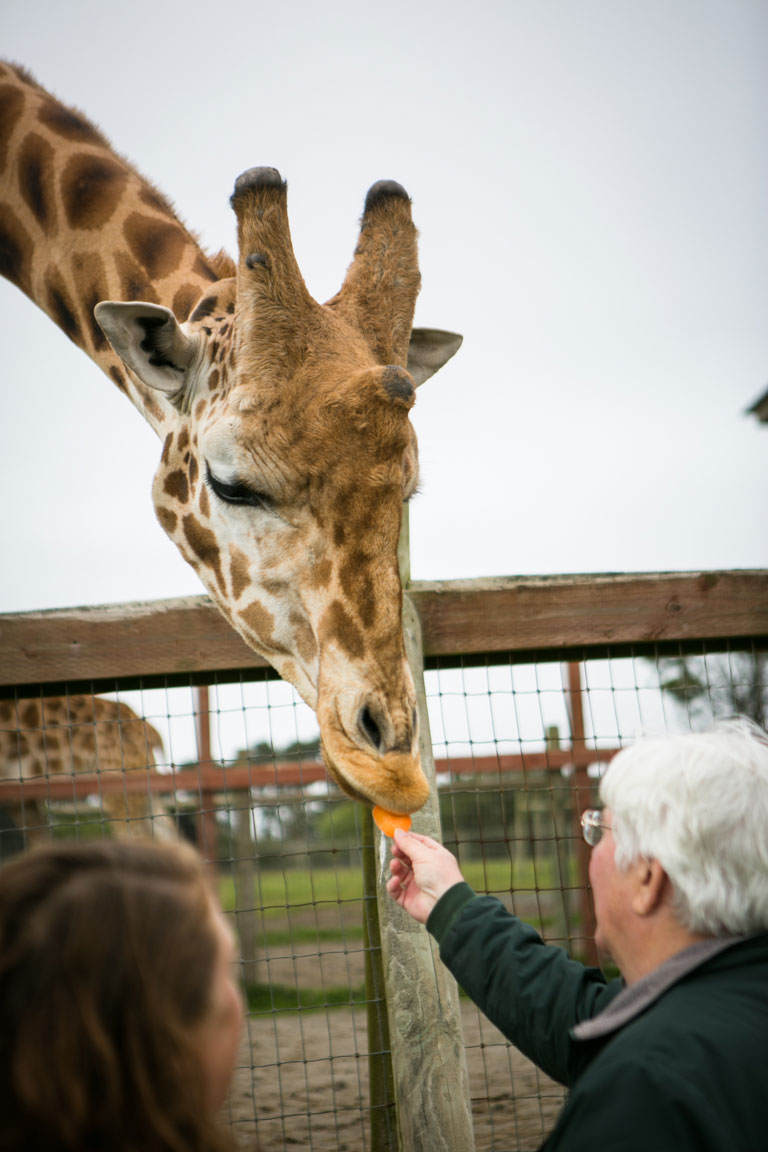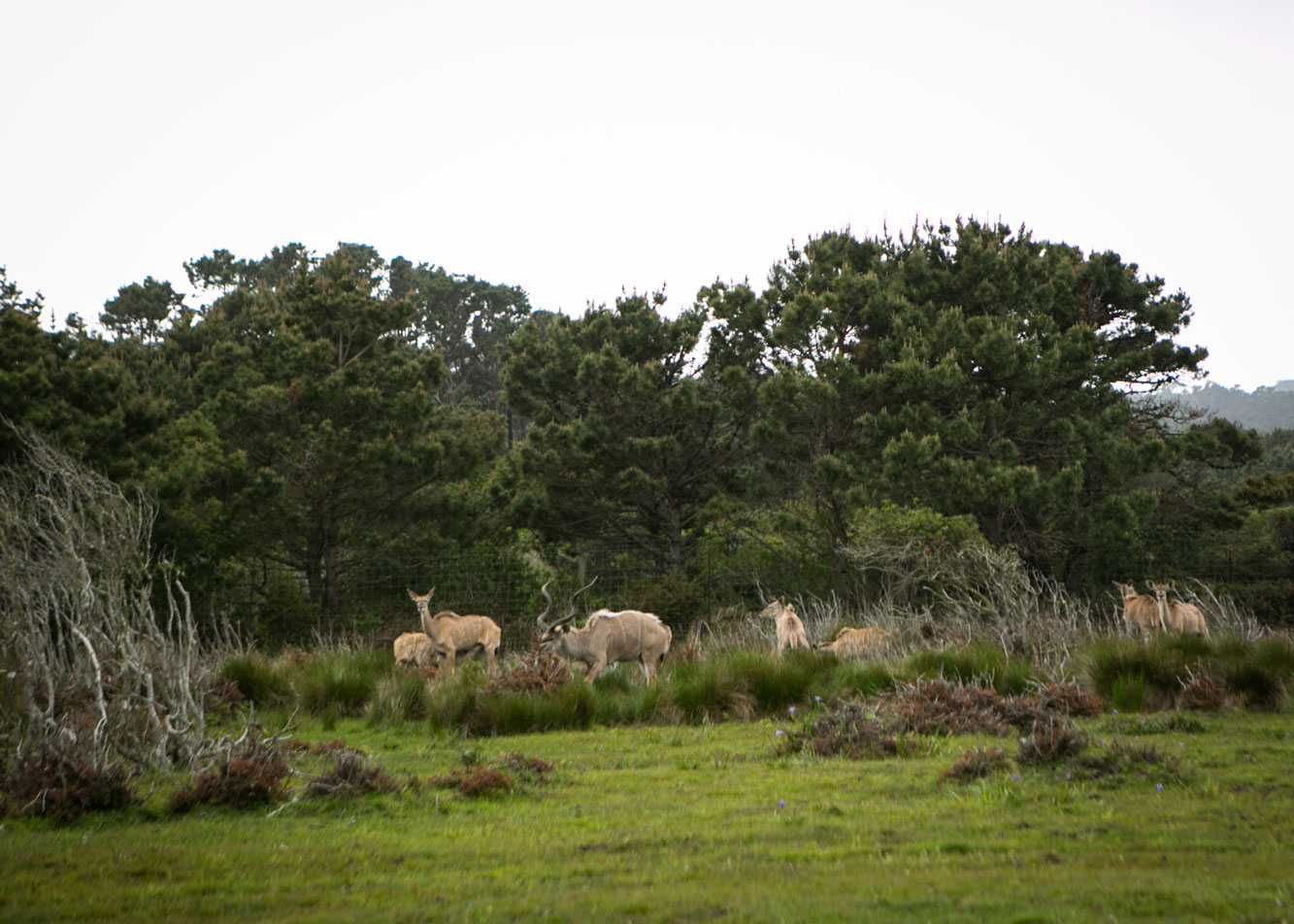B. Bryan Preserve Point Arena's Sanctuary for Endangered African Ungulates

by Holly Madrigal
photos by Bobby Cochran
Long, feminine eyelashes waft languidly before the black tongue, impossibly long, reaches out for a slice of sweet potato. “The giraffe's tongue is about 21 inches,“ says Eunice Contreras, the Head Animal Keeper at B. Bryan Preserve. Mendocino County is known for all sorts of things: wine, waves, wilderness . . . but giraffes?
For many people, both tourists and locals, the 100-acre ranch is something entirely unexpected in a county that already defies predictability. Frank Mello, PhD, and Judy Bryan Mello originally started this wildlife preserve on a working cattle ranch in Mississippi, but they moved the operation to a large historic home and ranch in Point Arena in 2004. They created a first-class preserve for “African hoof stock“ within reach of the coastal breezes. The ranch is home to 80 or 90 animals at any one time, and currently includes three varieties of zebra (each distinct in temperament and behavior), three types of antelope, five male Rothschild giraffes and, new to the group, a cape buffalo.
“Our goal here is to breed these animals and conserve them by growing our own herds, as well as participating in Species Survival Plans,“ explains Eunice. They hope to preserve 100 years of genetic diversity so that if something happens to the wild population, healthy genetics can be reintroduced.
Guests can tour the working preserve in the morning at 9:30 or afternoon at 4:00 (3:30 in winter), trundling along the ranch roads in vintage Land Rovers. The process culminates in an opportunity to feed the tallest living animal on earth. The giraffes know you are coming, and their heads bob gracefully nearly twenty feet above you. Used to plucking the leaves of tall acacia trees in their native African environs, their enormous heads swivel down, sensory hairs on their muzzle alert to detect what is food and what is not. Soft lips nuzzle the delicious sweet potato slices from the fingers of delighted visitors. The brave place the treats in their mouths for a giraffe kiss.
Rothschild giraffes have five ossicones on their heads (most other species have two or three). These nodules are not antlers or horn, but rather bone covered in skin and hair. Their beautiful patchwork coats ripple with muscles holding up those long necks. All the giraffes at B. Bryan Preserve are nine years old at the moment—the species can live up to 28 years in captivity. The tallest of their kind, male Rothchilds can reach 19-20 feet tall. Transporting them to the preserve at two years of age involved finding a safe route with high enough underpasses!
Giraffes are victims of what conservationists call a “silent extinction.” There are fewer than 100,000 giraffes left in the wild. For contrast, there are around 300,000 endangered African elephants in the world, and their plight is more well publicized. The Rothschild giraffe population had declined to 700 individuals due to both habitat loss and poaching. Through conservation efforts, the numbers have rebounded to more than 2,000 individuals.
“At college in San Luis Obispo, I was able to volunteer at a zoo and do some wildlife rehab work with Pacific Wildlife Care, and I knew I wanted to work with exotic animals,“ says Eunice, as she maneuvers the ancient Land Rover down the dusty track. “I applied here as an intern, which is a three-month program. Interns have to complete an enrichment project and a training project. At the end of my internship they hired me on as permanent staff.“
Genna Little, a keeper at the preserve, stays with her grandmother in Sea Ranch. “This was a dream that I never thought would actually happen,“ she shares, as Jagger (one of the tallest boys) tugs at a long branch of acacia she holds up for him. “Every day I come to work I think . . . I am living my dream.“
Guests can come for just the tour or spend the night in one of the cottages on site. It surprises them to hear that this area is within 4 degrees of the temperature in South Africa. The rangeland is perfectly suited to these majestic animals, and they have settled easily into the fabric of south coast life. Their manure is shipped down the road to Oz Farm so the “zoo poo,“ as they call it, can fertilize their crops. All the animals at B. Bryan Preserve are herbivores or ruminants, so they make nutritious manure.
Along the northern perimeter of the preserve live the greater kudu antelope, also known as the Grey Ghost of Africa. Their dun colored coat and unique markings allow them to disappear amongst the trees. Their spiraling horns reach far above their heads. During a recent hoof trim (under sedation for safety) staff was able to measure the horns of the eldest male—an impressive 45 inches long. At 14 years, he is the oldest male in North America. Thanks to B. Bryan Preserve, his valuable genetics can be passed on.
The preserve is also home to three endangered zebra species—Plains Zebra, Grévy's Zebra, and Hartmann's Mountain Zebra. Eunice poses a question: Are the zebras white with black stripes or black with white stripes? Both, she declares. If you were to look at the skin under the zebra hair, it would be grayish, whereas the underlying skin of the giraffe holds the same stunning umber patchwork as their hair. And many of the zebras we saw, upon closer inspection, were not strictly black and white but deep shades of dark brown.
The health of all the species at B. Bryan Preserve is under threat in their natural habitats. The preserve's owners are doing their part to raise awareness through education and improving genetic diversity. Learn how you can visit or help at their website. Meanwhile, step up and place that slice of sweet potato between your lips—a huge black tongue is swooping down for a kiss.
B. Bryan Preserve
130 Riverside Drive, Point Arena
(707) 882-2297 | BBryanPreserve.com
BY RESERVATION ONLY

